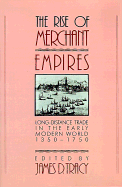Book contents
- Frontmatter
- Contents
- Preface
- Maps
- Introduction
- 1 Structural changes in European long-distance trade, and particularly in the re-export trade from south to north, 1350–1750
- 2 The growth and composition of trade in the Iberian empires, 1450–1750
- 3 The growth and composition of the long-distance trade of England and the Dutch Republic before 1750
- 4 France, the Antilles, and Europe in the seventeenth and eighteenth centuries: renewals of foreign trade
- 5 Productivity, profitability, and costs of private and corporate Dutch ship owning in the seventeenth and eighteenth centuries
- 6 The Dutch and English East India companies compared: evidence from the stock and foreign exchange markets
- 7 World bullion flows, 1450–1800
- 8 Merchant communities, 1350–1750
- 9 Economic aspects of the eighteenth-century Atlantic slave trade
- 10 Marginalization, stagnation, and growth: the trans-Saharan caravan trade in the era of European expansion, 1500–1900
- 11 The “decline” of the central Asian caravan trade
- 12 Merchant communities in precolonial India
- 13 Merchants without empire: the Hokkien sojourning communities
- Index
8 - Merchant communities, 1350–1750
Published online by Cambridge University Press: 01 June 2011
- Frontmatter
- Contents
- Preface
- Maps
- Introduction
- 1 Structural changes in European long-distance trade, and particularly in the re-export trade from south to north, 1350–1750
- 2 The growth and composition of trade in the Iberian empires, 1450–1750
- 3 The growth and composition of the long-distance trade of England and the Dutch Republic before 1750
- 4 France, the Antilles, and Europe in the seventeenth and eighteenth centuries: renewals of foreign trade
- 5 Productivity, profitability, and costs of private and corporate Dutch ship owning in the seventeenth and eighteenth centuries
- 6 The Dutch and English East India companies compared: evidence from the stock and foreign exchange markets
- 7 World bullion flows, 1450–1800
- 8 Merchant communities, 1350–1750
- 9 Economic aspects of the eighteenth-century Atlantic slave trade
- 10 Marginalization, stagnation, and growth: the trans-Saharan caravan trade in the era of European expansion, 1500–1900
- 11 The “decline” of the central Asian caravan trade
- 12 Merchant communities in precolonial India
- 13 Merchants without empire: the Hokkien sojourning communities
- Index
Summary
The study of “merchant communities” represents the sociological dimension of research on “merchant empires.” Apart from the geography of trade and commercial mechanisms, institutions, techniques, commercial doctrines, and politics, merchant community is the social base of the merchant universe. It would be beneficial if beyond that social base we could reach the mental base. Unfortunately the latter, despite the classic works of authors such as Werner Sombart and Max Weber, still remains largely unknown. This paper will therefore put emphasis on the former.
The first difficulty one encounters in approaching the subject is that of periodization. Merchant communities, as we will see, existed before 1350. Well before 1750, moreover, they no longer played the role that they had in the sixteenth century, at least if we use the term “merchant communities” in its most precise sense. In fact, the boundaries of merchant communities are to be found not so much in space as in the definition itself. The term “merchant community” could be loosely used to describe various forms of merchant gatherings or groupings that are not exactly the “merchant communities” I will be discussing. At the outset of merchant activities, merchants in towns formed a sworn association, or one or more guilds, in the same way as artisans or specialists of all kinds. They had nothing in common with a prêt à la grosse, a union of at least two partners, or a commenda, ancestor of the modern limited partnership company, or even a company of equal partners gathered for either a specific trade operation or a series of operations.
- Type
- Chapter
- Information
- The Rise of Merchant EmpiresLong Distance Trade in the Early Modern World 1350–1750, pp. 255 - 286Publisher: Cambridge University PressPrint publication year: 1990
- 13
- Cited by



